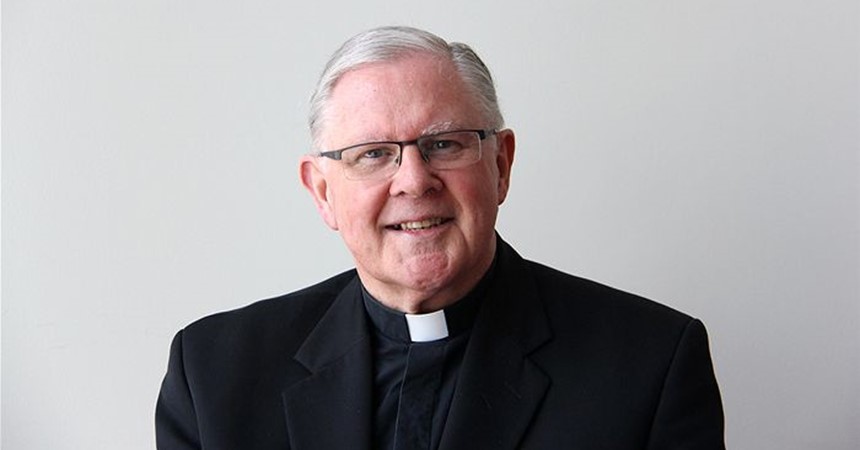The bishops took the decision to move to a Plenary Council in 2016, but the roots of that decision reach way back to the early 2000s. It was then that the late Archbishop Philip Wilson proposed that the time was right for the Church in Australia to prepare for some kind of national ecclesial event.
This was in the wake of Pope John Paul II’s letter at the end of the Year 2000, Novo Millennio Ineunte, in which he urged that all the Church’s organs of communion be galvanised to prepare for mission in the new millennium. These were also the years when the full force of the sexual abuse crisis was beginning to be felt.
At first, the bishops couldn’t agree on whether this was a good idea or this the right time or, if it was, what kind of ecclesial event would be best. So we entered upon a process of discernment which included the Year of Grace in 2012.
This was a kind of retreat for the whole Church in Australia during which, taking our cue from Novo Millennio Ineunte, we sought to contemplate the face of Christ in the hope that this would equip us better to make a decision about a national ecclesial event.
The Year of Grace worked better than we expected, but still at its end there was no clear agreement among the bishops about how to move forward.
In 2013, however, two things happened that were game-changers.
The first was the Federal Government’s decision to have a Royal Commission into Institutional Responses to Child Sexual Abuse; the second was the election of Pope Francis. These two events converged to make the need for some kind of national ecclesial event to chart a course into a future in a time of dramatic change seem more necessary.
Pope Francis then announced two Synods of Bishops, a year apart, both focusing on marriage and the family. The first of these Synods in 2014 included only the presidents of bishops conferences. It was followed by a time of fermentation which prepared for the second Synod in 2015.
I was one of the two Australian bishops elected to attend that Synod. It was, for me, an extraordinary experience, in some ways an awakening.
For the first time – certainly at a Roman Synod – I saw discernment in action. It was messy and unpredictable; at the halfway mark it looked very unlikely that we would achieve anything worth achieving. Yet at the end we did produce something which wasn’t the last word, but which was a real contribution to the ongoing journey of the Church.
Part of why that Synod succeeded when failure threatened was the speech on synodality given by Pope Francis in those last days of the gathering – October 17 to be precise. It was an extraordinary speech at the end of a long and often tedious celebration of 50 years of bishops synods since the Second Vatican Council.
It was while listening to the Pope that I had a kind of light-bulb moment. I thought: “Yes, now finally is the time for the Church in Australia to move towards a plenary council.” That’s what came to me with great clarity and conviction, which seemed to me at the time and still seems to me the work of the Holy Spirit.
I returned to Australia and said as much at the next plenary meeting of the Bishops Conference in November 2015. The Conference decided to set up a committee to make recommendations to the next plenary meeting of the bishops in May 2016. The committee’s recommendation was to decide for a plenary council, and that’s what the bishops voted for – not unanimously, but by a large majority.
So we set out on a journey with three phases. The first phase was the preparation, which involved a great deal of consultation – Listening and Dialogue, as we called it. We were trying to listen to as many voices as possible responding to the basic question, “What do you think God is asking of us in Australia at this time?” This was in the belief that only in listening to each other would we hear the voice of the Holy Spirit.
The second phase, which is upon us now, is the phrase of celebration, by which is meant the first assembly in October this year, the time of fermentation after that leading to the second assembly in the middle of next year.
Then we will gather up the results of the assemblies and send them to Rome for papal approval, which is to ensure that what has come from the Council is in harmony with the doctrine and discipline of the universal Church. This will lead to the promulgation of the decisions and decrees of the Council.
A third phase of the journey will be the implementation of those decisions and decrees; and that could take a very long time indeed, as it has with the Second Vatican Council. It may also involve local synods to embed the decisions of the Fifth Plenary Council of Australia in the local Churches.
In Novo Millennio Ineunte Pope John Paul II described Vatican II as “the great grace given to the Church in the twentieth century”. As I look back on the journey that has brought us to this point and forward to all that lies ahead, I would say that the Plenary Council is the great grace given to the Church in Australia at the dawn of the twenty-first century.
It was always the work of the Holy Spirit – and it will be no less as we move, like Abraham, into the future which God is preparing.
Author: Archbishop Mark Coleridge
